An adventure at the Santee Coastal Reserve WMA, eBird Hotspot #1
- birding211
- Apr 28, 2023
- 4 min read
The Santee Coastal Reserve Wildlife Management Area is ranked #1 on eBird with 275 species of birds recorded. The reserve covers 24,000 acres with an amazing variety of habitats for all types of wildlife to flourish. Habitats include diverse forests, freshwater, brackish and tidal wetlands, two barrier islands, agricultural fields, old rice impoundments, intracoastal waterway, and the Santee River Delta. The Longleaf Pine Forest is home to 2 of only 15 birds that are fully endemic to the Continental United States! The Red-cockaded Woodpecker and the Bachman's Sparrow are both in decline but flourish in this managed Longleaf Pine habitat.

I started the morning early arriving at the entrance road at 6:28am. As I rolled downed the windows I immediately heard songbirds singing throughout the Longleaf Pine Tree forest that surrounds the dirt road. One of the beautiful songs I heard was from the Bachman's Sparrow, this secretive sparrow is much easier to find when it sings in the springtime. The song is a clear, sweet whistle followed by a musical trill.
I counted several more Bachman’s Sparrows singing along the road along with Eastern Bluebirds, Common Yellowthroats and Pine Warblers. I parked by Mazyck Road and walked a portion of the Eldorado and Woodland Trails. I heard the very cool song of the Eastern Wood-Pewee which sounds just likes its name, PEE-a-wee.
I walked further down the Woodland Trail hearing a variety of birds including a Yellow-throated Vireo, Brown-headed Nuthatches, Red-bellied Woodpeckers, and lots of Eastern Towhees.
I made it to an agricultural field and I could hear two unique songbirds singing in the distance. I followed the two songs, one a musical song of 3 syllable phrases with breaks in-between and the second an unbroken mumbled warble. I could see a bright red male Summer Tanager singing the phrased song high in a tree canopy on the edge of the agricultural field.

I then found a beautiful male Blue Grosbeak singing the mumbled warble atop a small Pine Tree.

As I headed back down the trail toward the car, I stumbled across a foraging group of Red-cockaded Woodpeckers! They make a distinctive squeaky shirrp call and can be very vocal in groups.

I then headed further into the refuge to walk portions of the Marshland Trail, Ormand Hall Trail and Cape Trail. While driving I noticed a large dark brown bird at the edge of a grassy field, I stopped and got a brief look at the Wild Turkey before it disappeared into the woods.

Passing the Washo Reserve I could hear the loud Sweet Sweet Sweet song of a Prothonotary Warbler. I stopped to watch this amazingly bright yellow warbler and in one quick flight to another branch it snagged a Dragonfly!


I walked through the wonderfully peaceful woods and continued to hear a variety of songbirds. Arriving at a large freshwater impoundment, I immediately flushed two Least Bitterns. These small herons hide in the tall grass of the marsh and make a low and descending cooing call. Listen to the lower call under the louder background calls.

This impoundment is one of my favorite sections to walk as it always has a diverse population of birds and has a very scenic view of the thriving wetland habitat.




After the freshwater impoundment I walked through more wooded wilderness. As I was enjoying the sweet whistled song of a nearby Yellow-throated Warbler a large cat slowly walked across my line of sight. I quickly realized it was a Bobcat! The Bobcat did not even look my way and casually continued to walk along the road directly in front of me.


I finished walking the Ormand Hall Trail and began to walk the dike that connects to the Cape Trail. I could see lots of ducks and larger shorebirds in the distance. I immediately noticed one of my favorite shorebirds, the Black-necked Stilt! These dapper birds have a sharp black and white pattern, long pink legs and a long black bill. They were foraging throughout this large impoundment.


The stilts were accompanied by both Greater & Lesser Yellowlegs, best distinguished by their calls. The Greater Yellowlegs makes 3 to 4 loud deew deew deew notes and the Lesser Yellowlegs makes one or two short whistled too too notes. After scanning the impoundment I found a small flock of Least Sandpipers, a Solitary Sandpiper, and a Short-billed Dowitcher. Also there were several group of Blue-winged Teal and a pair of Mottled Ducks. I walked the dike along the impoundment unintentionally flushing several more Least Bitterns from the tall grass. I even spooked a massive Alligator from a muddy bank, who made such a large splash a school of minnows leaped from the water.


After the impoundments I headed toward the wooded area on the Cape Trail, along the habitat edge I found two Orchard Orioles and a Green Heron. At the end of the Trail I passed a Purple Martin nest site and got some close looks at the dark shiny purple color of the resting Males.

My last stop of the day was the Big Well Trail which has several impoundments along the South Santee River. As I parked near the fishing dock a large flock of Tree Swallows jockeyed for position along the utility wire.

The Big Well impoundment was somewhat quiet with the exception of Red-winged Blackbirds and Common Gallinules who both thrive in these grassy impoundments. I did see a mature Bald Eagle soaring way in the distance and a small flock of White Pelicans. After walking a good portion of the Big Well Trail, I added a few birds to the day's list including American Coot, Pied-billed Grebe, a couple of Terns and two Northern Rough-winged Swallows.

It was an awesome day birding Charleston County’s top birding hotspot! I tallied 88 bird species covering 10.39 miles in 4 hours and 46 minutes. This is a great place to visit for any birding, hiking, or outdoor enthusiast. It can be very buggy so make sure to bring bug spray and enjoy this wonderful wilderness!
ebird Checklist: https://ebird.org/checklist/S134987281
Happy Birding!
-Charles
.png)







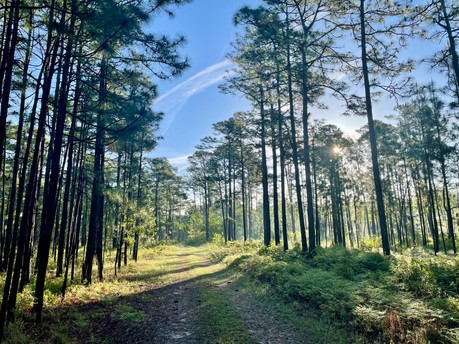



































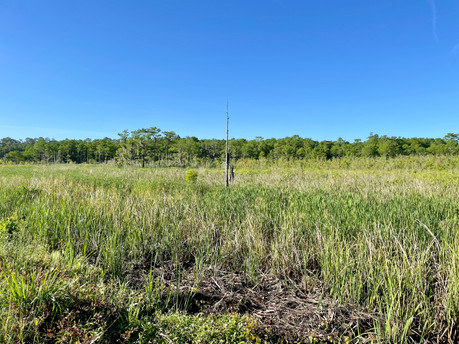



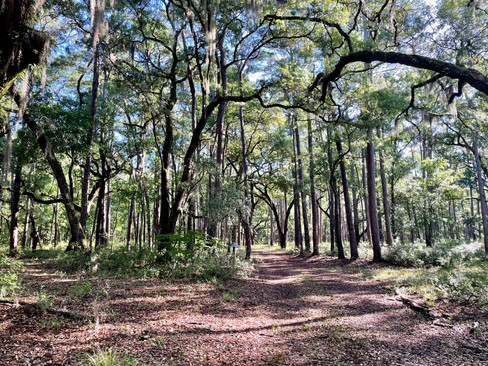















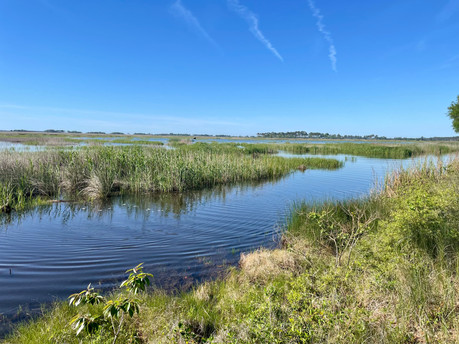



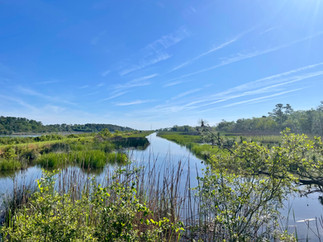











































































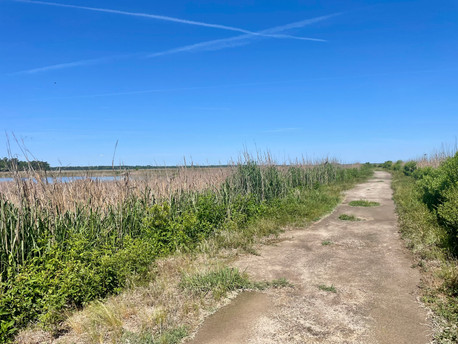










































Comments